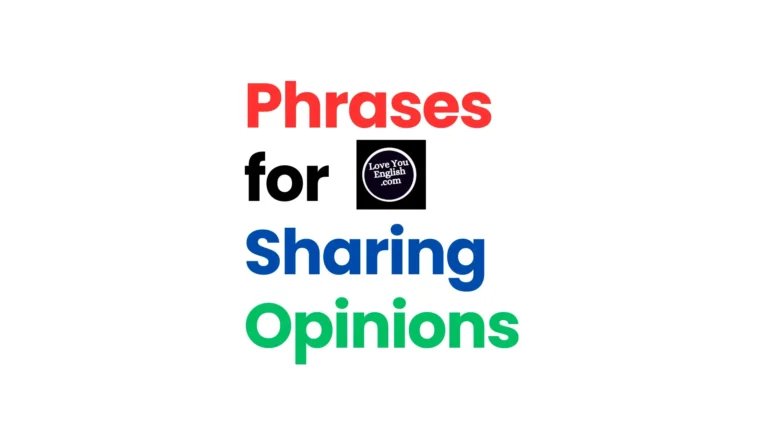What Are English Idioms? How to Use them like a Native Speaker
Hello everyone,
Have you ever heard someone say “It’s raining cats and dogs” or “costs an arm and a leg” and been totally confused?
Those are examples of idioms – colorful phrases that mean something different than the literal words.
Native English speakers use idioms all the time in casual conversation.
If you want to sound more natural and fluent in English, learning common idioms is really important.
In this lesson, we’ll cover:
– What idioms are and why they’re used
– How idioms are different from other figurative language
– How to understand the real meaning of idioms
– Tips for using idioms naturally like a native speaker
What Are Idioms?
An idiom is a phrase that has a different metaphorical meaning than the literal meaning of the individual words.
For example:
“Break a leg”
The literal meaning would be breaking your actual leg bone, which would be horrible.
But the idiomatic meaning is wishing someone good luck, usually before a performance or competition.
“Let the cat out of the bag”
Literally letting a cat out of a bag doesn’t mean anything. But the idiom means to accidentally reveal a secret.
So, idioms can’t be understood by just looking at the basic words in the phrase.
You have to know the real idiomatic meaning that native speakers recognize.
Why Do We Use Idioms?
Idioms allow us to express more vivid, creative meanings beyond basic dictionary definitions.
They add color, imagery, and emotional impact to the way we communicate.
Many idioms are quite old and stem from earlier metaphors or analogies that made more literal sense in the past.
Using common idioms also helps native speakers sound more natural and part of the shared culture.
Someone who only uses very literal language tends to sound overly formal or robotic.
Sprinkling in some idioms is part of sounding like a “normal” native speaker.
How Idioms Are Different from Other Figurative Language
Idioms are a type of figurative language, but they’re distinct from other metaphors, analogies, and figures of speech:
Similes compare two things using “like” or “as”:
“Running like the wind” compares a person’s speed to the wind.
Metaphors state one thing is another thing:
“All the world’s a stage” compares the world to an acting stage.
Hyperbole uses obvious exaggeration:
“I’m so hungry I could eat a horse!”
Personification gives human traits to non-human things:
“The wind howled in the night.”
But idioms are distinct phrases that native speakers know and use with a very specific metaphorical meaning different from the literal meaning of the words.
You can’t deduce the real meaning from analyzing the component words.
Understanding the Real Meaning of Idioms
So how do you learn what idioms really mean?
There’s no way to understand “kick the bucket” as meaning “to die” just by looking at those words.
You have to learn common idioms one-by-one along with their actual meanings.
The good news is that native English speakers only use a few hundred idioms regularly.
While reference books list thousands of idioms, you can go a long way by knowing just the most frequent ones.
Here are some tips for learning the meanings of new idioms:
– Ask native speakers to explain when they use an unfamiliar idiom.
– Look up unfamiliar idioms in a dictionary or idiom reference.
– Look at the context around how the idiom is used.
– Notice if there are any clues based on the literal imagery.
For example, “let the cat out of the bag” relates to revealing a secret by visualizing letting a contained cat escape from a bag.
With “break a leg,” people suggest it originated as a metaphor to wish actors literally good luck by hoping they wouldn’t really break a leg during a performance.
Tips for Using Idioms Like a Native Speaker
Once you understand what common idioms mean, how do you start using them appropriately like a native English speaker?
Here are some tips:
1. Don’t overdo it – use idioms sparingly
Native speakers only sprinkle in a few idioms in everyday conversation. Using too many idioms in a row can make you sound unnatural and like you’re trying too hard.
2. Match the idiom to the context and tone
Some idioms are more informal, slangy, or even rude. An idiom like “couch potato” suggesting laziness might be okay among friends but too insulting in a workplace. Pay attention to context.
3. Use idioms consistently
Once you learn an idiom’s real meaning, make sure you use it with that meaning consistently. Don’t mix up different idioms or change parts of the wording.
4. Listen for commonly used idioms
Notice which idioms native speakers around you actually use and how they use them. Those are the most natural ones to pick up first.
5. Practice makes perfect
The more you practice using idioms yourself, the more naturally you’ll be able to incorporate them into conversation. But go slowly at first until you get the hang of using them appropriately.
Common English Idioms to Know
To get you started, here are 20 extremely common English idioms with examples showing how they’re used:
“Get a grip”
Meaning: Get control over your emotions
“Relax and get a grip! This isn’t the end of the world.”
“Hit the books”
Meaning: Study diligently
“I need to hit the books this weekend before my exam.”
“Let someone off the hook”
Meaning: Not hold someone responsible
“I shouldn’t have let her off the hook for missing curfew.”
“Once in a blue moon”
Meaning: Something that rarely happens
“He only goes to the movies once in a blue moon these days.”
“A piece of cake”
Meaning: Something that’s easy
“The test was a piece of cake if you studied the material.”
“Pull someone’s leg”
Meaning: Tell someone a joke or fib
“She was just pulling my leg about joining the circus.”
“So far so good”
Meaning: Something is going well so far
“So far so good with the house renovations, but we’ll see what issues come up.”
“Speak of the devil”
Meaning: The person just being discussed has arrived
“Speak of the devil, here’s Tom now!”
“Take it with a grain of salt”
Meaning: Be skeptical, don’t completely believe something
“Take any rumor you hear with a grain of salt unless there’s proof.”
“Through thick and thin”
Meaning: Remaining loyal during good and bad times
“She’s been my best friend through thick and thin for 20 years.”
“An old hand”
Meaning: Someone experienced at a particular activity
“She may be young but she’s an old hand at computer programming.”
“Cut to the chase”
Meaning: Get to the main point quickly
“Cut to the chase – what are you trying to ask me?”
“Leave no stone unturned”
Meaning: Explore every possible place or option thoroughly
“We left no stone unturned when searching for the missing hikers.”
“Kill two birds with one stone”
Meaning: Accomplish two things with a single action
“Let’s grab dinner while running errands to kill two birds with one stone.”
“Costs an arm and a leg”
Meaning: Something that is extremely expensive
“That designer purse costs an arm and a leg!”
“Go the extra mile”
Meaning: Make an extra effort beyond what’s required
“Thanks for going the extra mile to help set up for the party.”
“On the ball”
Meaning: Quickly informed, alert, and attentive
“You really need to be on the ball for this fast-paced job.”
“A piece of my mind”
Meaning: Blunt thoughts or criticism
“The next time I see him I’ll give him a piece of my mind about being so rude.”
“See eye to eye”
Meaning: Agree with someone’s perspective
“My dad and I will never see eye to eye on politics.”
“When pigs fly”
Meaning: Something that will never happen or is extremely unlikely
“When pigs fly maybe I’ll actually enjoy doing taxes!”
These are just a small sample of extremely common English idioms.
As you can see, the literal meanings of the words don’t directly match the intended figurative meanings.
Becoming fluent with idioms takes study and practice, but it’s an important part of sounding natural.
Use these tips to start incorporating idioms into your English!
____________________
Check out these awesome phrases & Idioms books I recommend:
IDIOMS and PHRASES Anglo,Synonyms and Antonyms Anglo,One Word Substitution






